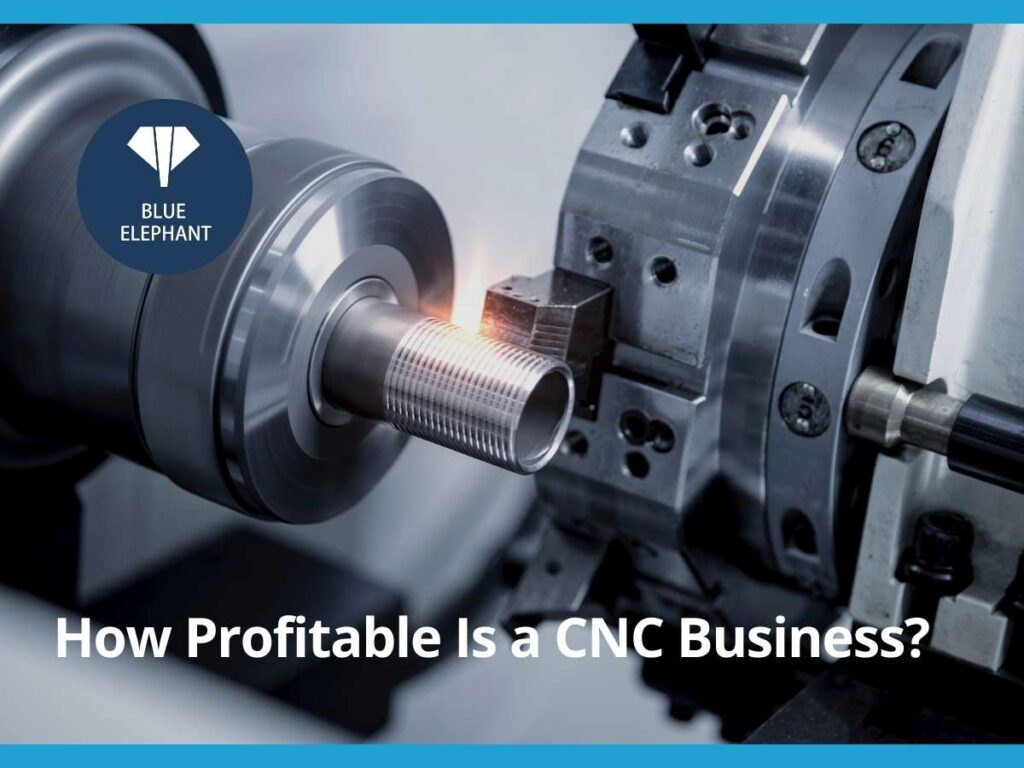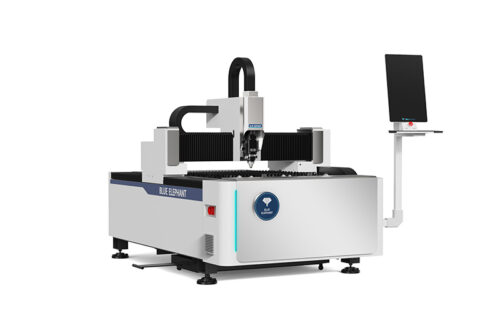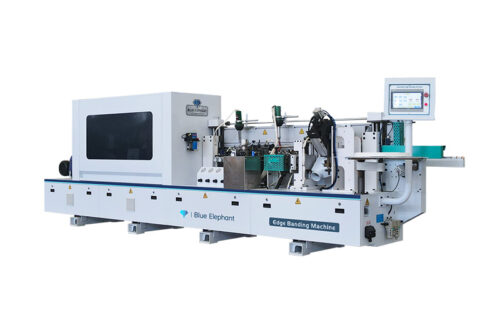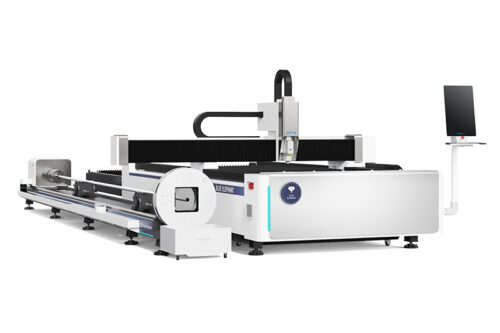Starting a CNC business looked easy on paper.
I had the machine. The orders were coming in. And yet, something wasn’t adding up. No matter how many projects I completed, my profits stayed low. Materials cost more than I expected. Some jobs took twice as long as planned. And when my machine broke down, I lost a week’s worth of work.
I almost gave up.
But after adjusting my pricing, cutting unnecessary costs, and finding better ways to run my shop, things turned around. I learned what makes a CNC business profitable and what doesn’t.
If you’re trying to figure out if CNC is a smart investment, this article will help.
You’ll get a breakdown of potential earnings, startup costs, and real strategies to keep your business running smoothly. By the end, you’ll have a clear answer on whether this business is right for you.
So let’s dive in!
1. Is CNC Business Profitable?
Can you really make good money with a CNC business?
That’s what I asked myself before I got started.
I remember the moment I decided to invest in my first CNC machine. I had seen people turning simple wooden signs into profitable products. Others were making parts for businesses and charging premium prices. It looked like a great opportunity.
But reality hit fast.
The machine itself was just one piece of the puzzle. Material costs added up quickly. Mistakes wasted both time and money. And pricing my work? I got it wrong at first. I charged too little, thinking lower prices would bring in more customers. Instead, I just ended up working harder for less.
I almost quit.
But after adjusting my pricing, refining my process, and learning what sells, things turned around. I figured out that CNC businesses can be very profitable but only if you understand what affects your bottom line.
What Affects CNC Business Profitability?
There are three big factors that can make or break your CNC business.
- Upfront and Ongoing Costs
How much does it really cost to run a CNC business?
A CNC machine is a big investment, but it’s not the only cost you need to think about.
- Materials: Wood, metal, plastic—these costs add up fast.
- Software & Tools: CAD/CAM software, router bits, maintenance parts.
- Electricity & Workspace: CNC machines use power, and you need space to operate efficiently.
- Repairs & Downtime: If your machine breaks, you’re losing money until it’s fixed.
Early on, I didn’t think much about these costs. I assumed my machine would pay for itself quickly. It didn’t—not at first. It took time to find a steady flow of orders and manage expenses properly.
- Market Demand and Competition
Who is willing to pay for CNC work?
Just having a machine isn’t enough. You need customers. Some CNC businesses thrive, while others struggle to find steady work.
The most profitable CNC businesses serve industries with consistent demand, like:
- Custom furniture makers (tables, cabinets, home decor).
- Sign shops (business signs, house numbers, branding materials).
- Industrial part suppliers (metal and plastic components for manufacturing).
- Prototyping services (custom one-off designs for inventors and businesses).
I started out making custom signs. But I soon realized too many others were doing the same thing. The market was crowded, and customers expected lower prices. So I shifted my focus to niche products with less competition and higher margins. That change made all the difference.
- Pricing and Efficiency
How do you price CNC work without losing money?
I got this wrong at first. I charged too little. I thought low prices would bring in more customers. Instead, I found myself overworked, underpaid, and frustrated.
Successful CNC businesses do things differently:
- They price based on time, material, and overhead costs.
- They reduce waste and speed up production.
- They offer extra services (like finishing or assembly) to increase profit margins.
Once I figured this out, things got easier. I worked smarter, not harder. I stopped taking every job and focused on the ones that made the most profit.
A CNC machine is an opportunity. But what you do with it determines your success.
2. CNC Business Models & Their Profit Potential
Not all CNC businesses make money the same way. Some bring in steady income with bulk orders, while others focus on custom work with higher profit margins. When I started, I tried a little of everything—custom signs, furniture pieces, even small engraved gifts. Some jobs paid well. Others barely covered material costs. It took time to figure out what was actually profitable.
Here are the most common CNC business models and their earning potential:
- Custom Furniture Production: Tables, cabinets, and decorative panels are always in demand. High-ticket sales, but materials and labor costs add up fast. I once spent weeks on a large custom table, only to realize I barely made a profit. Pricing these jobs correctly is key.
- Sign-Making and Advertising – Storefront signs, logos, and lettering bring in repeat business. Profitable, but competition is tough. I knew a guy who started with small business signs and ended up landing contracts with major retail chains.
- CNC Machining for Industrial Parts: Manufacturers need precision-cut parts in bulk. High-paying work, but requires technical skill and expensive equipment.
- Engraving and Personalization: Custom gifts, plaques, and branded products have low material costs and high markups. I once made a batch of engraved wooden coasters and realized they sold for triple the cost of materials. The challenge? Standing out from the competition.
- Prototyping for Manufacturers: Engineers and product designers need one-off prototypes. This work pays well but requires precision and experience.
- Small-Scale Hobbyist Sales (Etsy, eBay, etc.): Selling CNC-made crafts and home decor online can be profitable, but marketing is everything. I’ve seen hobbyists turn their side business into full-time income, but it takes patience and branding.
The best CNC businesses balance high demand, good pricing, and low material costs. Some jobs look profitable until you factor in time and overhead. Finding the right model makes all the difference.
3. Costs and Investment: What Do You Need to Start?
If you’re thinking about starting a CNC business, it’s important to understand the full investment upfront. Here’s what you need to know.
Initial Investment
Starting a CNC business isn’t just about buying a machine. You need the right equipment, a proper workspace, and the right software to get started.
CNC Machine Cost
CNC machines come in different price ranges. What you need depends on the type of work you plan to do.
- Entry-Level Machines ($1,000 – $5,000): Great for small projects, engraving, and hobby work. Slower speeds and limited material options.
- Mid-Range Machines ($5,000 – $20,000): Good for small businesses making furniture, signs, or prototypes. More power and precision.
- Industrial-Grade Machines ($20,000+): Built for heavy production and machining metal. High precision, faster cutting speeds, and longer durability. Blue Elephant offers industrial-grade CNC machines designed for businesses that need high performance and reliability in large-scale production.
New vs. Used Machines:
- New machines come with warranties and tech support but cost more.
- Used machines are cheaper but may need repairs and upgrades.
I started with a mid-range machine and quickly realized it’s not just about price it’s about reliability. A cheap machine that constantly needs repairs will slow you down.
Workspace and Tools
Where will you run your CNC business?
- Home-Based Shop: Lower overhead, but limited space. Great for small projects.
- Rented Workshop: More room for production, but added monthly costs.
Essential tools you’ll need:
- Router bits and cutting tools
- Clamps and fixtures for securing materials
- Vacuum system for dust collection
Some of these tools seem small, but they make a huge difference in efficiency.
Software & Training
CNC work requires CAD (design) and CAM (machining) software.
- Free software options: Good for beginners but limited in features.
- Paid software ($300 – $2,000+): More advanced features, better toolpath control, and faster workflow.
There’s also a learning curve. I spent weeks figuring out how to generate clean toolpaths. Some people take online courses, while others learn through trial and error. Investing in training can save a lot of wasted materials.
Ongoing Expenses
A CNC machine isn’t a one-time purchase. There are ongoing costs you need to account for.
Material Costs
Every job requires raw materials. Prices vary depending on what you cut:
- Wood ($5 – $100 per sheet): MDF and plywood are cheaper. Hardwood is more expensive.
- Acrylic & Plastics ($20 – $200 per sheet): Used for signage, engravings, and custom pieces.
- Metal ($50 – $500 per sheet): Aluminum and steel cost more but are needed for industrial parts.
Some materials are easy to find. Others require bulk orders or special suppliers.
Maintenance & Repairs
CNC machines wear down over time. Expect costs for:
- Replacing router bits and cutting tools ($20 – $200 per month)
- Cleaning and lubricating parts
- Fixing broken motors or belts ($100 – $1,000 per repair)
I ignored maintenance at first. Big mistake. A broken spindle set me back two weeks of production. Lesson learned.
Electricity & Other Utilities
CNC machines use power. Some more than others. Expect higher electricity bills, especially if you’re running multiple machines or cutting dense materials.
Hidden Costs to Consider
Some expenses sneak up on you. These are the ones I didn’t plan for:
- Shipping & Logistics: Ordering bulk materials saves money, but shipping costs can add up fast.
- Marketing & Customer Acquisition: Running ads, building a website, or attending trade shows all cost money.
- Hiring Staff or Outsourcing: As your business grows, you might need help. That means payroll, training, or contracting work out.
Starting a CNC business takes more than just buying a machine. It takes planning. Understanding these costs upfront will help you avoid surprises and start strong.

4. Who Are Your Customers? Finding the Right Market
It took time to figure out who my best customers were. If you want to make real money with CNC, finding the right market is key.
Profitable Industries for CNC Businesses
Some industries need CNC services all the time. These customers pay well and come back for more.
B2B (Business-to-Business) Customers
B2B clients often place large, repeat orders. They need reliability and precision. If you can deliver, this market is steady and profitable.
- Manufacturers Needing Custom Parts: Factories need CNC-cut metal and plastic components. These jobs require precision but pay well.
- Signage and Advertising Agencies: Businesses need CNC-cut letters, logos, and custom signs. Many agencies outsource this work.
- Construction Companies: Interior panels, custom doors, and architectural details are in high demand. Builders and contractors look for CNC shops that can handle large-scale projects.
Some of my biggest orders came from businesses needing bulk work. Unlike one-time customers, they keep coming back.
B2C (Business-to-Customer) Markets
B2C customers usually order one-off projects or small batches. These jobs have higher profit margins, but you have to spend time finding new buyers.
- Homeowners Looking for Custom Furniture: Dining tables, cabinets, and decor pieces sell well, but custom work takes time.
- Hobbyists and Craft Enthusiasts: DIYers love laser-cut parts, stencils, and templates for their own projects.
- Small Business Owners Ordering Branded Products: Coffee shops, boutiques, and event planners often need custom signs, displays, or engraved merchandise.
I started with B2C customers. It was fun, but unpredictable. Later, I took on B2B clients for stability.
How to Find Customers
Even the best CNC shop won’t make money without customers. Here’s how to get them.
Online Marketing
The easiest way to get orders without leaving your shop is online.
- Set Up a Website: Show off past work, list services, and make it easy for customers to contact you.
- Use Social Media: Instagram, Facebook, and Pinterest work well for CNC businesses. Show process videos and finished products.
- Sell on Etsy or eBay: Custom signs, home decor, and laser-cut crafts sell well on these platforms.
A simple website and a few posts a week can bring in steady work.
Local Networking
Not all businesses happen online. Some of the best customers are right in your city.
- Partners With Local Businesses: Sign shops, contractors, and furniture stores often need CNC work.
- Attend Trade Shows and Industry Events: Meet potential clients in person. Even one good connection can turn into steady work.
I’ve landed some of my best jobs just by talking to the right people.
Finding the right market makes all the difference. Some customers pay more. Some place repeat orders. The key is knowing where to look.

5. Challenges in Running a CNC Business
Making money with CNC sounds great until reality kicks in.
At first, I thought owning a CNC machine meant steady income. I was wrong. Running a CNC business comes with challenges. Some are small. Others can wipe out your profits if you’re not careful.
Here are the biggest roadblocks and how to overcome them.
High Competition
CNC work is everywhere. Sign makers, furniture builders, and machine shops all offer similar services. When I started, I priced my work too low to compete. Bad idea. I worked harder but made less.
How do you stand out?
- Offer something unique (custom finishes, specialty materials, or faster turnaround times).
- Target a niche with less competition (high-end furniture, industrial prototyping, or personalized products).
- Build a reputation for quality and reliability. Customers remember good service.
I learned that cheap pricing attracts cheap customers. Instead, I focused on quality and my business grew.
Learning Curve
CNC work looks easy until you start making mistakes.
- Wrong toolpaths = ruined material.
- Poor settings = bad cuts or machine damage.
- Cheap materials = unhappy customers.
When I started, I wasted a lot of material. I had to learn the right speeds, feeds, and bit choices. Every mistake costs money.
How to avoid this?
- Test on scrap materials before cutting expensive pieces.
- Invest in training (online courses, tutorials, or hands-on practice).
- Keep notes on what works to avoid repeating mistakes.
Mistakes happen. The key is learning from them fast.
Machine Downtime & Maintenance
If your CNC machine isn’t running, you’re not making money.
One day, my spindle broke in the middle of a big order. It took two weeks to fix it. That was two weeks of lost income.
How to avoid downtime?
- Regular maintenance (clean, lubricate, and check parts).
- Keep spare parts on hand (bits, belts, and motors).
- Know a good repair technician before you need one.
A well-maintained machine runs smoother and lasts longer.
Scaling Challenges
When should you invest in a second CNC machine?
I reached a point where I had more orders than I could handle. I worked long hours just to keep up. But buying another machine? That was a big decision.
Signs it might be time to scale:
- You’re turning down work because you can’t keep up.
- You have steady demand and repeat customers.
- You can afford the extra costs (space, power, and maintenance).
Scaling too early can drain your cash. Waiting too long can slow your growth. The key is finding the right balance.
If you’re at this stage, investing in a high-performance, industrial-grade CNC machine like those from Blue Elephant can help you increase production without sacrificing quality.
CNC businesses are profitable, but only if you navigate the challenges. Learning, adapting, and staying ahead will keep your business moving forward.
6. How to Maximize CNC Business Profits
Making money with CNC isn’t just about cutting materials.
I learned that the hard way. At first, I focused on getting orders. I thought more jobs meant more profit. But I was wrong. The real money comes from working smarter, not harder.
Here’s how you can maximize your CNC business profits.
Increasing Efficiency & Reducing Waste
Optimizing Production Workflow
In the beginning, I wasted a lot of time and materials. Messy toolpaths, poor planning, and fixing mistakes all cost money.
How to fix it?
- Plan Toolpaths Carefully: Bad toolpaths waste materials and increase cutting time. Optimizing them saves both.
- Batch Similar Jobs: Cutting multiple pieces at once reduces machine downtime.
- Invest in Better Software: Good CAD/CAM software helps you cut faster and with more precision.
Making small changes added up to big savings for me.
Reducing Material Waste
Every wasted piece of wood, metal, or acrylic is money lost.
- Use Nesting Software: This arranges pieces efficiently on the material to reduce scrap waste.
- Buy Materials in Bulk: Lower costs per sheet means higher profit per job.
- Sell Leftover Scraps: Some small businesses or hobbyists will pay for usable offcuts.
I used to throw away leftover pieces. Now, I find ways to use or sell them.
Offering Value-Added Services
Some CNC businesses compete on price. That’s a losing game. Instead, offering extra services helps increase profits without cutting corners.
- Assembly: If you make furniture or signage, putting pieces together adds value.
- Painting & Finishing: Customers will pay more for fully finished products.
- Engraving & Personalization: Adding names, logos, or custom details boosts the price.
I once charged $50 for a plain wooden sign. After adding a painted finish and custom engraving, I sold the same type of sign for $150. The extra steps took minutes but tripled my profit.
Upselling & Cross-Selling
If customers trust you, they’ll buy more from you.
- Upselling: Offer premium materials, custom finishes, or faster turnaround times.
- Cross-Selling: Sell related items if someone buys a custom sign, they might also want a stand or mounting hardware.
I had a client order custom cabinet doors. Instead of just selling the doors, I offered matching drawer fronts. They agreed—and I made an extra sale without much extra work.
Maximizing CNC profits isn’t about working harder. It’s about reducing waste, adding value, and making the most of every customer interaction. Small changes can lead to bigger profits over time.
7. Is It Worth Starting a CNC Business?
Starting a CNC business isn’t just about buying a machine. Success depends on three key things:
- Controlling Costs: Machines, materials, and software all add up. Knowing your expenses upfront helps avoid surprises.
- Running Efficiently: Every wasted minute or material cuts into profit. The more you optimize, the more you keep.
- Finding the Right Market: Some niches pay well. Others are flooded with competition. Choosing the right customers makes all the difference.
Many people jump into CNC work without a plan. I made that mistake. I thought I could just take any order and make money. But once I focused on high-paying projects and repeat clients, my business became stable.
Final Advice
Thinking about starting a CNC business? Here’s what I’d do differently if I started over:
- Research the market first. Find out what sells and who needs CNC services in your area or online.
- Plan your investment. Don’t just buy the biggest machine you can afford. Start with what fits your business model.
- Invest in training. Learning proper software and toolpath techniques early saves time and money in the long run.
- Don’t ignore marketing. A CNC machine won’t bring in customers on its own. A simple website and social media presence help attract buyers.
Starting a CNC business isn’t for everyone. But if you plan well, keep costs under control, and focus on profitable work, it can be a great way to build a strong, long-term business.
A CNC machine is just a tool. How you use it determines your success.
Conclusion
Starting a CNC business isn’t just about owning a machine. It’s about running a smart, profitable business.
We covered everything costs, customers, challenges, and ways to maximize profits. Now, the real question is: Are you ready to take the first step?
I was unsure at first too. But once I focused on the right market and efficient operations, things changed. You can do the same.
What’s stopping you from starting? Fear? Uncertainty? The unknown?
The best way to move forward is to start planning today.
Need help? Contact us and let’s make it happen.
Explore More of Our Resources
We’ve gathered a few more articles that could help you out. Check them out for more great advice:
Still haven’t found what you’re looking for? Don’t hesitate to contact us. We’re available around the clock to assist you.













